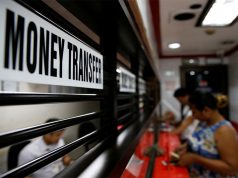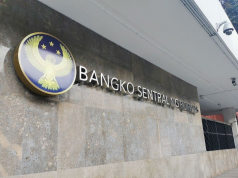
MANILA – The central bank is looking to introduce a new risk management measure that would require banks to set aside additional capital as reserves, this time to cover potential losses amid rapid loan growth.
Bangko Sentral ng Pilipinas (BSP) Governor Nestor A. Espenilla, Jr. said the central bank is now looking to introduce the countercyclical capital buffer (CCyB) that will require big banks to maintain such a “sufficient capital base” at times of “excessive” credit growth.
This prudential tool is included in the international Basel 3 framework, although the central bank initially decided not to adopt the standard.
“This is part of the Basel III framework which the BSP had not included in our 2014 application of the revised capital standards. As we consider the remaining components of the Basel III agenda, our framework for the CCyB will be issued for comments in the first half of the year, including the calibration of the extent of the buffer,” Mr. Espenilla said in a recent e-mail to BusinessWorld.
The central bank chief said the measure is being studied in the face of the “potential buildup of systemic vulnerabilities” in the financial system.
The BSP joined other central banks in adopting the new set of Basel standards starting with the capital adequacy ratio (CAR) — the amount which banks need to deploy as buffers to protect themselves for possible episodes of funding crunch.
Currently, banks are required to keep funds on standby equivalent to 10% of their assets that pose significant potential risk to their health.
This is higher than the eight percent global standard.
Once imposed, the CCyB means big banks in the Philippines need to accumulate additional capital during a credit boom, on top of the regular CAR.
“In downturns, the regime should help to reduce the risk that the supply of credit will be constrained by regulatory capital requirements that could undermine the performance of the real economy and result in additional credit losses in the banking system,” according to CCyB guidelines published by the Bank for International Settlements (BIS).
Economists have been flagging the Philippine economy’s increased risk of overheating amid sustained double-digit growth in bank lending.
Mr. Espenilla has said that the economy is simply “warm but not red hot,” with the rapid increase in bank lending simply matching the pace of robust gross domestic product (GDP) growth.
Philippine GDP expanded by 6.7% in 2017, cementing the country’s place in the ranks of Asia’s fastest-growing economies — next to China’s 6.9% and Vietnam’s 6.8% — albeit slowing from the 6.9% pace recorded the preceding year.
At the same time, bank lending increased by 19.2% year-on-year as of end-November, according to latest available central bank data.
The BIS — which drafted the Basel III reform agenda — requires regulators to set a sufficient buffers relative to banks’ risk-weighted assets.
The BIS said authorities are expected to look at a country’s credit-to-GDP ratio as a benchmark in prescribing buffer levels. The Philippines posted a credit-to-GDP ratio of 63.6% as of end-June 2017 which is among the lowest in Asia.
A central bank may choose to raise capital requirements to temper credit growth.
Sought for comment Monday, Union Bank of the Philippines President and Chief Operating Officer Edwin R. Bautista said introducing the CCyB “indeed enhances risk management” as it allows lenders to cover losses when the credit cycles goes on a downturn.
“As to whether banks would be able to meet the requirement, it would depend on the specifics that BSP will use in crafting the circular,” Mr. Bautista said in a mobile text message.
“Nonetheless, please take note that Philippine banks have been well-capitalized comfortably above minimum standards.”
Other Basel III measures currently in place in the Philippines include the 30-day liquidity coverage ratio and the framework for domestic systemically important banks. A five percent minimum leverage ratio will also kick in by July which seeks to avert excessive debt exposures among banks.









